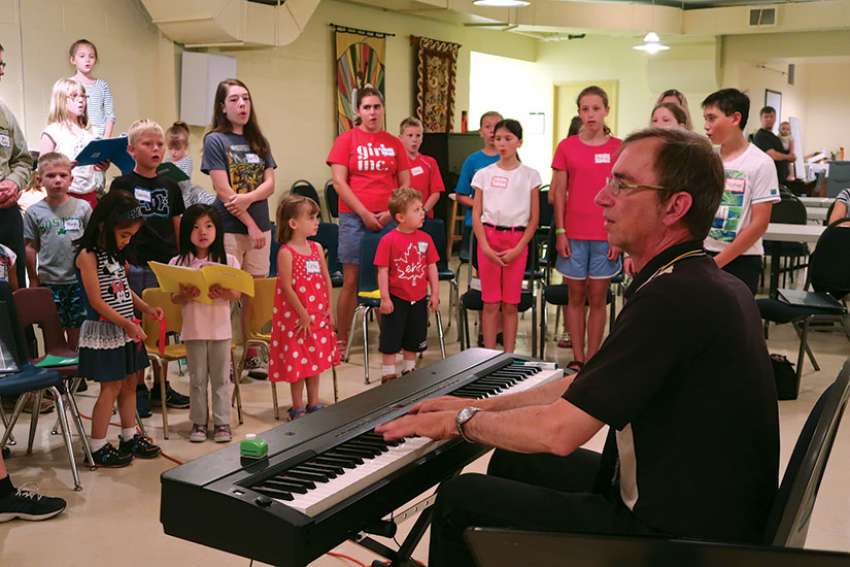This is why Uwe Lieflander believes that teaching children classical sacred music allows them to understand foundational truths of the Catholic faith.
For Lent and Easter, he introduced his Sparrows choir students, aged three to 16 years old, to Giovanni Battista Pergolesi’s “Stabat Mater.”
“Just as Easter is impossible without Lent, knowing about the Crucifixion prepares you for the deep meaning of the Resurrection,” said Lieflander. “(‘Stabat Mater’ is) sort of an extremely meaningful Way of the Cross that you do with the children when you go through all the movements.”
About 350 choir students were scheduled to perform Pergolesi’s “Stabat Mater” at Hawthorne School for Girls in Toronto on April 12, marking the first time young Sparrows from across the Greater Toronto Area would perform together.
The Sparrows choir school is a musical program founded in 1999 that runs in individual parishes and schools across Ontario, with one program also running in Vancouver.
For months, Lieflander has been travelling between Sparrows choirs at Immaculate Conception Parish in Port Perry, Ont., St. Elias Church in Brampton, Ont., and Hawthorne School for Girls in Toronto.
“This has definitely helped the students to prepare for Easter,” said Theresa Kim, assistant director at Hawthorne School for Girls. “When Mr. Lieflander explains to them the meaning behind the text, he also explains to them how the music imitates a certain mood or character.”
During each rehearsal session, he would introduce a new section of the piece by teaching the young Sparrows the English translation of the Italian lyrics. He talks to them about painting the scenes in their minds and imagining Mary walking with Jesus.
“In movement six, Jesus dies. Then from movement seven and onwards, the soul asks these meaningful questions,” said Lieflander. “How does it influence my salvation? How does it help me in my relationship with God and with Mary? How can I align myself to Christ through this?”
Lieflander also tells the children the story of the composer himself. A 26-year-old Pergolesi was on his deathbed, suffering from tuberculosis, when he wrote his musical settings to “Stabat Mater.”
“When he wrote (the last movement) he was really writing about himself and his own mortality,” said Lieflander. “On Easter, we learn why this Passion has taken place. We learn about the Passion through the ‘Stabat Mater’ and Easter is the glorious conclusion to it.”
“Stabat Mater Dolorosa” is a 13th-century poem that is often credited to being written by Franciscan monk Jacobus de Benedictis or Jacapone da Todi, a lawyer and lay member of the Franciscan order.
Regardless of who wrote the poem, this Catholic hymn to Mary has become engraved within liturgical celebrations, including the Stations of the Cross and the Feast of the Seven Sorrows of Mary.
The first stanza translated, begins with “At the Cross her station keeping, stood the mournful Mother weeping, close to her Son to the last.”
As the poem continues, the reader accompanies Mary as she witnesses her Son’s Passion. It is an emotional account of the moments that led to Jesus’ death and resurrection.
Many Western composers have written their own musical settings to this poem, including Antonio Lucio Vivladi (1712), Pergolesi (1736) and Antonin Dvorak (1877).
“Pergolesi’s setting is the best setting of the ‘Stabat Mater,’ ” said Lieflander. “It’s probably one of the most beautiful Lenten pieces I know.”


